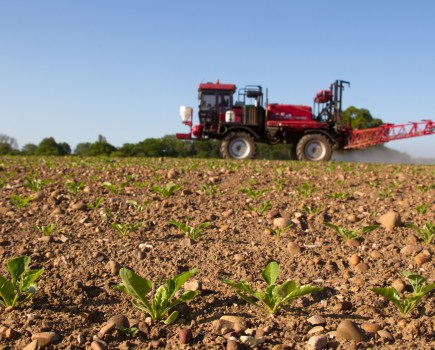High levels of light leaf spot have been found in UK crops much later in the season than usual – but there’s still time to treat it, stress experts.
Light leaf spot thrives in cool, moist conditions, meaning the recent wet weather has contributed to its prevalence. Equally, there’s been less of the warmer, drier weather that usually helps to control the disease.
According to the AHDB, some control can be achieved with a sclerotinia spray, but light leaf spot is polycyclic and can develop very quickly. With many fields still yellow with 50% of pods formed, it’s worth remembering that fungicide can be applied up to the very end of flowering, says senior field trials manager Mark Bollebakker.
Furthermore, while inspecting Recommended List trials in recently, Mark says he hasn’t seen such high levels of infection at some locations before. “Farmers should be wary of this outbreak as it could potentially have an impact on yields unless carefully managed through the use of fungicides during the next couple of weeks.
“The spread of light leaf spot has been particularly bad in areas of the country that have been particularly impacted by the poor conditions during the past few months. Symptoms can vary depending on the severity of the infection, and in the early stages especially it can be a real challenge to spot.
Symptoms
Light leaf spot is caused by Pyrenopeziza brassicae and is characterised by small, light green or brown spots on the leaves of the plant.
AHDB senior crop production systems scientist, Paul Gosling, says it’s vital that growers are wary of how easily the disease can spread.
“The fungus overwinters on crop residue and can be spread quickly through rain splash and wind, as well as by contaminated machinery such as tractors sprayers. Once the fungus infects a plant, it can quickly spread throughout the entire crop if left untreated.
“In addition to causing significant, direct yield loss, light leaf spot can also weaken the plant, making it more susceptible to other diseases and pests. This can further impact crop health and yield, making it essential for growers to properly manage and control the spread of the disease,” he adds.
Monitoring
“Regular monitoring of crops for early signs of infection is crucial for effective management and where the disease is established, growers should consider using fungicides,” says Paul.
Further guidance can be found in AHDB’s Fungicide Dose Response Curves for oilseed rape: Fungicide performance 2023 V2.pdf (projectblue.blob.core.windows.net)




